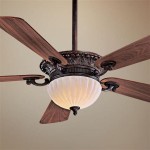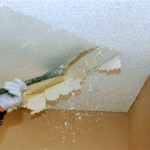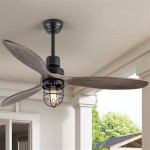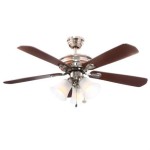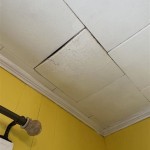How To Remove Stains From Your Car Ceiling
The interior of a vehicle often suffers from neglect, particularly the headliner, or ceiling. Unlike floor mats which are easily visible and frequently cleaned, the car's ceiling is often forgotten until unsightly stains appear. These stains can range from water marks and food splatters to nicotine residue and general grime. Understanding the nature of these stains and employing appropriate cleaning methods is crucial for restoring the vehicle's interior to its original condition.
Effectively removing stains from a car's ceiling requires careful consideration of the material. Most headliners are made of fabric glued to a backing board. Excessive moisture or harsh chemicals can loosen the adhesive, causing the fabric to sag or detach. Therefore, a gentle approach is typically more effective than aggressive scrubbing. Identifying the type of stain is also important, as different stains require different cleaning agents. Addressing stains promptly can prevent them from setting and becoming more difficult to remove over time.
Identifying the Stain and Assessing the Headliner Material
Before attempting any cleaning, a thorough inspection of the stain is necessary. Identifying the source of the stain – whether it’s a spilled beverage, pen mark, mold growth, or general dirt accumulation – informs the choice of cleaning solution. Water stains, often caused by leaks or condensation, require a different approach than grease stains originating from food or handprints. Determining the material of the headliner is equally important. Common materials include cloth, vinyl, and Alcantara. Cloth headliners are more absorbent and require careful moisture control to prevent sagging. Vinyl headliners are more resistant to stains and generally easier to clean. Alcantara, a synthetic suede-like material, requires specialized cleaning products and gentle techniques to avoid damage.
A simple test can help determine the headliner's durability. Apply a small amount of the chosen cleaning solution to an inconspicuous area, such as near the sun visor or under the dome light. Observe the area for any discoloration, fabric damage, or adhesive weakening. If no adverse effects are observed after a few minutes, the cleaning solution is likely safe to use on the rest of the headliner. This test helps prevent widespread damage and ensures the cleaning process is compatible with the material.
Gathering the appropriate tools and cleaning supplies before starting the cleaning process is essential for efficiency and effectiveness. A soft-bristled brush, microfiber cloths, a vacuum cleaner with an upholstery attachment, and a spray bottle are generally required. Cleaning solutions can range from mild detergents and upholstery cleaners to specialized stain removers. Choosing pH-neutral cleaners is generally recommended to avoid damaging the fabric or adhesive. Having these supplies readily available allows for a smooth and controlled cleaning process.
Gentle Cleaning Techniques and Solutions
The primary principle of cleaning a car's ceiling is to use the least amount of moisture possible. Over-saturation can weaken the adhesive bonding the fabric to the backing board, leading to sagging and costly repairs. Instead of directly spraying the cleaning solution onto the headliner, dampen a microfiber cloth with the solution and gently blot the stain. This controlled application minimizes the risk of over-saturation.
For general cleaning and light stains, a mixture of mild detergent and warm water can be effective. Mix a small amount of dish soap or laundry detergent with warm water in a spray bottle. Lightly dampen a microfiber cloth with the solution and gently wipe the stained area. Avoid scrubbing vigorously, as this can damage the fabric. Blot the area with a clean, dry microfiber cloth to remove any excess moisture and cleaning solution. Repeat this process as needed until the stain is removed or significantly reduced.
For more stubborn stains, such as grease or ink, specialized upholstery cleaners may be required. These cleaners are formulated to break down specific types of stains without damaging the fabric. Follow the manufacturer's instructions carefully, and always test the cleaner in an inconspicuous area before applying it to the entire stain. Apply the cleaner sparingly, and blot the area with a clean, dry microfiber cloth to remove any residue.
Steam cleaning can be an effective method for removing stains and sanitizing the headliner, but it should be used with caution. Excessive heat and moisture can damage the fabric and adhesive. Use a handheld steam cleaner with an upholstery attachment, and keep the nozzle moving constantly to avoid concentrating heat in one area. After steam cleaning, thoroughly dry the headliner with a clean, dry microfiber cloth or a fan. This helps prevent mold growth and sagging.
Vacuuming the headliner before and after cleaning is essential. Vacuuming removes loose dirt, dust, and debris that can interfere with the cleaning process. Use the upholstery attachment to avoid damaging the fabric. After cleaning, vacuuming helps remove any remaining cleaning solution or stain residue. This leaves the headliner clean and fresh.
Addressing Specific Types of Stains
Different types of stains require different approaches. Water stains, often appearing as rings or discoloration, can be challenging to remove. For water stains, a mixture of white vinegar and water can be effective. Mix equal parts white vinegar and water in a spray bottle. Lightly dampen a microfiber cloth with the solution and gently blot the stained area. The vinegar helps break down the minerals that cause the discoloration. Blot the area with a clean, dry microfiber cloth to remove any excess moisture. Repeat this process as needed until the stain is removed or significantly reduced.
Grease stains, often caused by food or handprints, require a degreasing agent. A mild dish soap or a specialized grease remover can be used. Apply the degreasing agent sparingly to the stain, and gently blot the area with a clean, damp microfiber cloth. Avoid scrubbing vigorously, as this can spread the grease. Blot the area with a clean, dry microfiber cloth to remove any excess residue. Repeat this process as needed until the stain is removed or significantly reduced.
Mold and mildew stains are often caused by moisture and poor ventilation. These stains can be identified by their dark color and musty odor. To remove mold and mildew, a mixture of bleach and water can be used. However, bleach can damage the fabric, so it should be used with extreme caution. Mix one part bleach with ten parts water in a spray bottle. Lightly dampen a microfiber cloth with the solution and gently blot the stained area. Wear gloves and eye protection to avoid contact with the bleach. Blot the area with a clean, damp microfiber cloth to remove any bleach residue. Thoroughly dry the headliner to prevent mold growth. Ensure adequate ventilation in the vehicle to prevent future mold and mildew problems. If the mold infestation is extensive, professional cleaning may be required.
Nicotine stains are often found in vehicles owned by smokers. These stains appear as yellow or brown discoloration and can be difficult to remove. A specialized nicotine stain remover or a mixture of ammonia and water can be used. However, ammonia can be irritating, so it should be used with caution and proper ventilation. Mix one part ammonia with ten parts water in a spray bottle. Lightly dampen a microfiber cloth with the solution and gently blot the stained area. Blot the area with a clean, damp microfiber cloth to remove any ammonia residue. Repeat this process as needed until the stain is removed or significantly reduced. Consider using an air freshener or odor eliminator to remove the lingering smell of nicotine.
Ink stains can be removed with rubbing alcohol. Lightly dampen a cotton swab with rubbing alcohol and gently blot the ink stain. Avoid rubbing vigorously, as this can spread the ink. Blot the area with a clean, dry microfiber cloth to remove any alcohol residue. Repeat this process as needed until the stain is removed or significantly reduced.
After addressing specific stains, allow the headliner to air dry completely. Open the vehicle's doors and windows to improve ventilation. Using a fan can also help speed up the drying process. Avoid using a hair dryer or other heat source, as this can damage the fabric and adhesive. Once the headliner is completely dry, vacuum it again to remove any remaining residue. Regularly vacuuming the car's ceiling will help prevent future stains and keep the interior looking clean and fresh.
When embarking on stain removal from a car's ceiling, patience and a delicate touch are paramount. Avoid aggressive scrubbing or the use of harsh chemicals, as these can inflict irreversible damage. If the stain proves resistant to home remedies, seeking professional assistance is advisable. A qualified auto detailing service possesses the expertise and specialized equipment to tackle stubborn stains without compromising the integrity of the headliner.

How To Clean Car Ceiling The Simplest Ways

How To Clean A Car Interior Roof Easy Steps Expert Tips

Headliner Deep Clean Stain Removal

Cleaning Heavily Stained Headliner How To Clean Car

How To Clean Car Headliner Factory New In One Weekend

How To Clean A Car Interior Roof Easy Steps Expert Tips

How To Clean A Car S Headliner Youtube

How To Clean Roof Upholstery In A Car The Leather Colour Doctor

How To Clean A Car Interior Roof Easy Steps Expert Tips

How To Clean Roof Upholstery In A Car The Leather Colour Doctor
See Also


